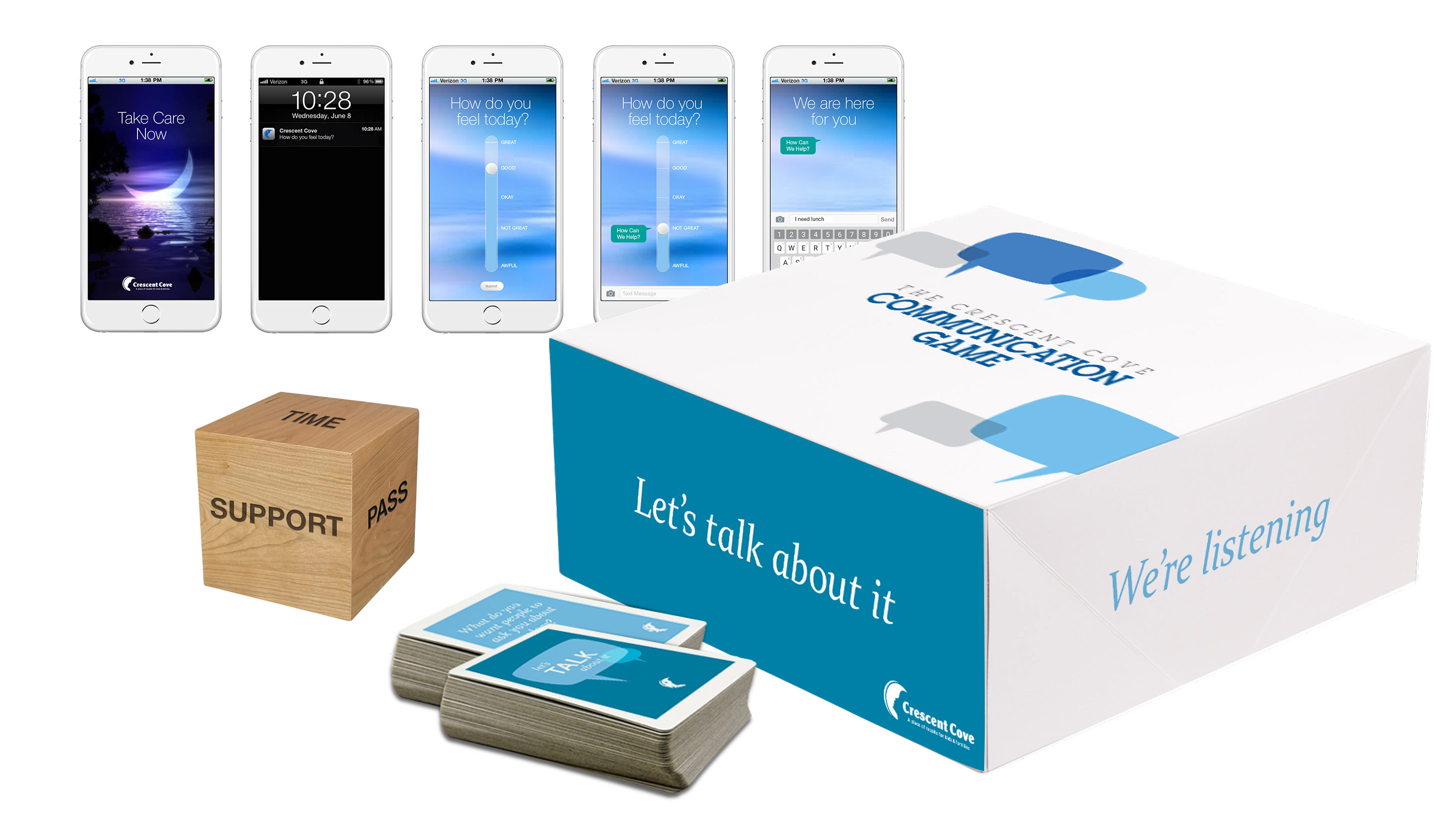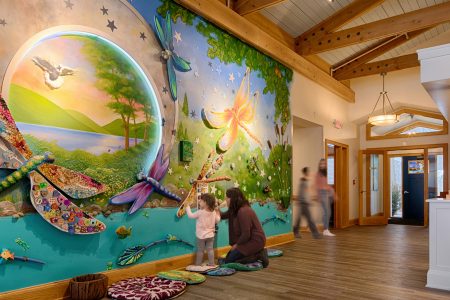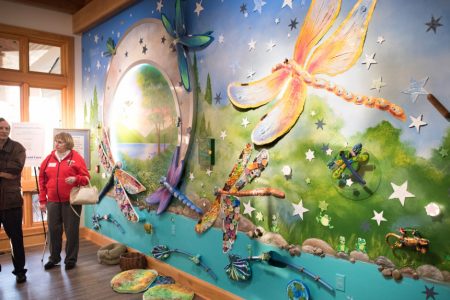Helping Families Flourish

by Teri Kwant, Director, RSP Dreambox
Originally published by Crescent Cove
The first thing I thought when our team was awarded the Crescent Cove design project was, “so incredibly awesome.” I was, quite honestly, tearfully overjoyed. Right after though, I experienced an “uh oh” moment. We were the proverbial dogs that caught the car. I should go back a few steps, so this reaction makes more sense.
I had a powerful resonance about this project from the moment I received an email from my colleague Jon. I learned that founder Katie, and the Crescent Cove organization are on a bold mission to create the third children’s home for respite and hospice in this country— the task would literally be groundbreaking. The task would also be to do research to create an environment that raises the awareness of the needs of these families, and raises the bar for the quality and range of care that each of these children and their families receive. He asked if we would be interested in pursuing this opportunity to design a children’s hospice and respite center. I replied with: Yes! Totally. I’m all in. Is there any other answer?
I knew then, as I do now, that we’d bring our whole hearts and minds to this. But this was a challenge unlike any other we’ve encountered as experience designers and architects.
So, why the uh-oh when we were told we were selected to do the work? Simple / not simple: I am a mom of a 19 year old son who is about to return to college this fall. He’s healthy, with the exception of a few minor scars and surgeries, and I have always known how lucky I’ve been to have had a relatively easy go of this parenting thing. Under that ease and good fortune, lurks the greatest fear I have as a parent: the utterly soul-baring experience of losing my child. I can’t imagine anything worse or more difficult to maneuver. It’s out of order. It’s not how things are supposed to go.
I understood quickly that I would have to look this fear in the face, and into the faces of these beautiful, and astonishingly resilient parents and caregivers who have met this experience head-on. A significant part of our discovery work would be doing deep dive interviews to learn about the experiences and needs of families who’ve lost children, or know that they likely will at some point. As an experience researcher, the words “when your child died,” had never passed my lips, but this was my task and became my mission: to fearlessly ask all the questions that needed to be asked, and to deeply listen to each and every answer in order to truly understand the essential emotional and rational needs of the families that we will serve.
Here’s what I found: these parents and families are extraordinary people who’ve met this experience with vulnerability, openness and rigorous honesty. They’ve met the most difficult of decisions with grace. To their credit they’ve also found dashes of humor and irreverence at times. To the families I had the honor to meet: I am so grateful to each of you for sharing your stories with us. Please know that your contributions will be immeasurably valuable to this design of this home. Your stories will be woven into the design of every room, every entry, and every garden.
Process
Our process of doing experience design is, as we like to say, simple, but not simplistic. Our four steps: Discover, Dream, Design, and Do, start with rigorous inquiry— the interviews. We embarked on this qualitative research to understand the highly unique needs of those we intend to serve; parents, siblings, extended family, staff, volunteers and medical professionals. We carefully crafted the research question to uncover the most important concerns and needs for each of these groups.
Interviews were conducted with more than two dozen people, and the findings of this research have already been far reaching. The question we asked was this: How would you / did you feel best supported and cared-for on your journey of caring, change and loss of your child? We explored this question fully and deeply by asking about the emotional, physical, financial and social aspects of each family’s experience. The results of our study provided clear, consistent and actionable insights that will inform design of the home.

The first insight from this research is that these families are not on a journey as our question had framed it, they are traversing an emotional and physical minefield. They have no idea what is coming next. And while I wish we could eliminate every one of the mines, I know we can’t. It’s a part of their lives with their deeply loved and beautifully unique children. Our task is to try and make that minefield feel a little less daunting, a little safer, with areas of rest and support, and moments of connection and celebration.
Other research insights uncovered the importance of location of the home, to both staff and parents, and that there are specific needs for privacy at sensitive hospice moments, along with the needs for social engagement and connection for those looking for respite. These contrasting and equally important needs will all be factored into the size, location, and design of the new Crescent Cove home. This home will require finessed and carefully designed areas and moments both inside and outside, for it to function as both a memorial and a place for joy and thriving.
Discovery
I’ve learned so much, and I’m so excited about this project that it’s hard to contain it to the size of one blog post, but I will share the biggest themes that emerged from the research:
We now know that families who have or have had a medically fragile child experience intense isolation, guilt, day-to-day grief, and have to navigate unknowns daily. They are exhausted, are not in the habit of asking for help. And when they do, they feel worry about placing the care of their children into the hands of others. From one father who lost his child, we learned the importance of being able to return to the place where the child lived until they died, and be immersed in the memories there. From several parents of children who may be respite users, we learned how important it will be to provide ongoing permission and rationale for taking time to care for themselves.
These experiences and insights have bolstered Crescent Cove’s commitment to providing “mini-respites” to support families now, even before the home is built. They have also informed the quality of experience that we’ll provide: at Crescent Cove we want our families and staff to feel Assured, Embraced, and Celebrated.
Our next task is the Design phase and we will begin to plan this home from the inside out, translating these experiences into spaces and places that will support families and staff as they travel through the minefield, and, celebrate life.
I’m so honored to be a part of this work— uncovering family’s needs and designing a home for Crescent Cove. What an eye-opening and heart-opening experience this has been for me and all the members of my team. I hope you will join us as we work together to make these families’ lives better, one experience at a time.


